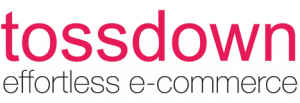Anyone can start an online business in Canada as long as they know how to navigate the market volatility with remarkable precision. Starting a new venture requires a solid business idea, financial planning, competitor analysis, and as much information about the market as possible. The bottom line is that your product or service may be exceptional but it’s useless if there’s no demand for it.
While setting up an e-commerce website is relatively easy, making money through it requires a lot of work. Rapid technological advancements and dynamic markets have made the world of e-commerce highly competitive, and you need to find a way to stand out. Here are some things you should do before you get your online business up and running.
Create a Business Plan
It’s important to create a great business plan to examine the viability of your idea before bringing it to the market. This well-researched document helps you identify market trends to make well-thought out predictions and forecasts about the future of your company. A business plan usually consists of the following.
1. Executive Summary
This is one of the most important sections of your business plan and often used to give investors and stakeholders a quick overview of the company, market analysis, and financial information. It’s a summary to highlight the key points regarding your business’s concept, goals and vision, and marketing strategy.
2. Business Description
This section will cover why you’re in business, what value you’re offering to potential customers, and why they’d pick you over competitors. It will discuss the present outlook of your business as well as future possibilities and opportunities. You might have to include some or all of the following information.
- Business model and nature of industry
- Short and long-term business objectives
- Business mission and vision statement
- Team and key personnel
Answering these questions will help investors and stakeholders understand the structure of your business and what it wants to achieve in the short and long run.
3. Market Research
Before launching any product or service, you must carry out meticulous market research to gain insights into target demographics and consumer behavior. Market research is a vital part of any business strategy and is an essential step to creating a customer-centric business. One of the most effective ways of carrying out market research is by using the segmentation, targeting, positioning (STP) model.
- Segmentation: Identify the basis for segmentation (geographic, demographic, psychographic, etc.) and determine the important characteristics of each market segment.
- Targeting: Evaluate the potential profitability of each segment and select the most appropriate ones to market your offering to.
- Positioning: Develop a detailed strategy that addresses the needs of your target segment(s), and draft a marketing plan for each segment.
4. Competitor Analysis
Competitor research focuses on the competition within the industry to help you understand how you can gain a competitive advantage. Evaluating the strengths and weaknesses of your competitors can help you learn from their mistakes and better market your products and services. It also helps you determine what threats they pose and to develop long-term strategies to handle any unforeseen challenges.
5. Marketing Plan
Before you develop a marketing plan, you need to create a user persona. A user persona is an archetype of your ideal customer, based on extensive market research and demographic data. Once you have your ideal user, you’ll have to answer the following questions to put together a detailed marketing plan.
- Who is your audience?
- How will you reach your audience?
- What need or want will you satisfy?
- How much will your product cost and how have you made that decision?
- How will your value proposition be better than that of competitors?
- How will you meet / exceed customer expectations?
To sum up, these questions include information on four key subjects: product, price, promotion, and place. The majority of your plan will focus on promoting your product or service to the final consumer through strategies like search engine marketing, search engine optimization, and effective content management, to name a few. Regardless, the marketing plan should briefly cover the other three areas as well so you know how to leverage your marketing mix effectively.
6. Operations and Logistics
This section must describe how the business will function on a day-to-day basis. For an online business, back-end supply chain management is critical since you have to rely on third parties to store and ship your products and services. It is essential to locate potential suppliers and distributors, determine their accessibility and efficiency, and put cost-effective solutions in place to meet consumer demand.
Everything in this section should be well thought-out and should signal to the reader that you understand the importance of a strong supply chain and have contingency plans in place to respond to any uncertainties.
7. Financial Plan
Regardless of how exceptional your product or service is, your business model is not going to be sustainable if you’re not going to be making money from it. Your financial plan must at least consist of the following:
- Income statement: The main purpose of an income statement is to report how much profit or loss your business made during a certain period of time. It records the income and expenses of the business to determine its profitability.
- Balance sheet: The balance sheet records the assets, liabilities, and equity of your business at the end of the financial year to gauge its financial health.
- Cash-flow statement: A cash-flow statement reports the cash inflows and outflows of your business during a specified period to determine whether it can meet its day-to-day financial obligations.
Set up Your Online Store
Once you’ve created your business plan, and know your value proposition and target audience, it’s time to set up your online store. Before you start selling to the general public, you need to thoroughly research the most appropriate e-commerce platform to best serve your business needs. Here are some of the things you need to do to get your online business started.
1. Website Development
Every online business needs a website to make sales and fulfill orders. In order to build a website, you need to carefully research your business objectives and the required level of expertise. Your e-commerce platform will not only list products and accept payment, but will also provide you with inventory management and marketing solutions.
For example, tossdown is an affordable e-commerce platform that offers commission-free sales and orders, inventory management solutions, and real-time data that caters to your unique business needs. It is financially sustainable in the long-run, without the added expense of costly plugins and add-on apps.
2. Domain Name Registration
Once you have your website, you’ll need to register your domain name. This makes it a lot easier for people to find you, and allows your brand to benefit from the advantages of having an online presence. Since no two domain names are the same, this is a great opportunity for you to distinguish yourself from your competitors.
3. Business Registration
Now that your website is up and running and you’re ready to start bringing in revenue, you must register your business with the Canadian government. You should learn more about Canadian taxes for businesses by visiting the Government of Canada CRA website.
E-Commerce Market Opportunities
Selling successfully through online channels requires market intelligence and insights into ongoing trends and forecasts. While you have an unlimited choice on what to sell, it’s always a good idea to identify products and services that are performing well in the current online space.
1. Food and Beverage
The last few years have seen a dramatic increase in e-commerce activity, especially in the food and beverage industry. Restaurant closures, mask mandates, and mandatory isolations left consumers with no other option but to use the services of food delivery apps to enjoy their favorite meals at home.
2. Online Education
E-learning and EdTech enjoys a stable, if not growing demand throughout the education sector in Canada. With one of the most educated populations in the world and with state-of-the-art telecommunications infrastructure in place, it’s no surprise that e-learning presents a massive opportunity in the online space.
3. Health and Fitness
The health and fitness industry is expected to have incredible growth post-pandemic. According to a recent report by RunRepeat, “Worth nearly $160 billion in 2021, the fitness industry is expected to grow 171.75% to $434.74 billion USD by 2028.” The report also mentioned that digital fitness apps and equipment experienced a revenue growth of 40.61% in 2020 and was expected to be up by 66.32% by the end of 2021, in comparison to pre-pandemic levels.
4. Home Improvement and Decor
The e-commerce segment of the home decor market in Canada is expected to grow at a rate of 4.4% between 2021-2027. This is prompted by the increase in online options and ever-increasing use of smartphones, which allows consumers to compare deals in real-time and make fully informed purchase decisions.
Conclusion
While it’s relatively easy to set up an online store and start selling products or services, ensuring that your business stays profitable in the long run is an enormous challenge. However, if you do your research, stay on top of consumer preferences, and find ways to control costs, you’ll have a profitable e-commerce website that allows you the flexibility to enjoy life on your own terms.


